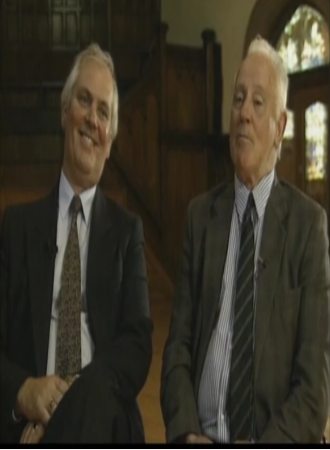
Sons of Derry 1992
Distributed by Cinema Guild, 1697 Broadway, Suite 506, New York, NY 10019-5904; 800-723-5522
Produced by Marcia Rock
Directed by Marcia Rock
VHS, color, 58 min.
Adult
History
Date Entered: 11/09/2018
Reviewed by Terrence McCormack, Head, M. Robert Koren Center for Clinical and Legal Education, University at BuffaloDerry, to the native Irish, and Londonderry to the English merchants and Scottish planters who in the 17th century resettled in that part of Ulster, has served, with Belfast, as a symbol of the "troubles" in Northern Ireland. Derry is located in the Northeast section of British controlled Northern Ireland, on the banks of the Foyle River and close to the border, of what is today, the Irish Republic. Throughout history Derry has been a flash point between Protestant Loyalist and Catholic Nationalist interests. The video program Sons of Derry produced in 1992, pre-dates the Anglo Irish Agreement and makes no mention of the wider efforts currently underway to resolve the problems in the North. However, producer Marcia Rock does offer viewers some perspective on the attitudes that led to talks on the future of Northern Ireland.
Through the experiences of two men Patty O'Dougherty and Glen Barr, political and cultural opposites, Marcia Rock reveals the strong historical and cultural differences that coexist with progressive attitudes to find common ground. Natives of Derry, Patty O'Dougherty from the predominantly Nationalist Catholic Bogside, and Glen Barr from the predominantly Loyalist Protestant Waterside, have come together in the common interest of improving life in Derry. Contrasting images between each man's life, work, neighborhood, and community, Rock adds names and faces to the complex reality of living in the divided city. O'Dougherty, the son of a dockworker, and a former civil rights activist during the 1970s, serves as Director of the Inter City Trust. He employs local people in an effort to restore Derry's historical sections of town and to redevelop a sense of heritage among members of his community. His counterpart, Barr, raised on the Waterside, the son of a carpenter, and former member of the Ulster Defense Association, works with computer related applications and trains both Catholics and Protestant through his Youth Training Program.
Rock skillfully reveals the cultural differences that exist in Northern Ireland through O'Dougherty's and Barr's respective backgrounds and experiences. She provides views with insight into each individual's approach to solving problems in each of their communities. With effective technical use of the media, she describes and shows the ultimate benefits to both communities, as these two men unite in their efforts for the common good. She also describes the entrenched problems, caused by years of conflict, and political realities that each man encounters in attempting mutual solutions.
Rock avoids the complex historical and political analyses of how the Northern Ireland situation came about. Instead she chooses a more simplified, but not superficial, survey of the historical and political events. She balances the issues by showing economic conditions and the family life of members in both communities and discussing their hopes for the future. This objective style makes the program useful for courses dealing with conflict resolution and social science courses dealing with issues related to Ireland, Northern Ireland and the United Kingdom.